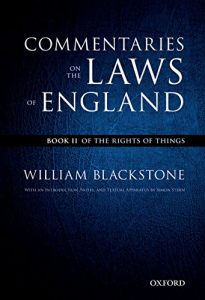The original edition of Judicial Tyranny, published in 1977, was the first exhaustive examination of the work of the Supreme Court in relation of the required oath to support the Constitution, which the Court has called “the imperative of judicial integrity.” It showed there were many important areas in which the Court substituting for the Constitution’s declared supremacy mere philosophical beliefs held from time to time by majority of the justices then sitting.
There has not been—nor can there be—any claim that these proofs are inaccurate. Indeed, the U. S. Supreme Court Historical Society has opined that they are accurate, indeed—“Though this work is exceedingly biased and fails to offer any practical solutions to the problems discussed, Judicial Tyranny remains a sound history of recent Supreme Court action.”
The author defends his bias: He insists that every judge who swears to support the Constitution should take that oath to heart—he must be loyal to the Constitution’s provisions instead of to political writings of earlier judges in the form of judicial opinions.
This is not an arcane subject. So fundamental is the principle of constitutional supremacy that it was early demonstrated that the judicial oath requires every judge, in enforcing “laws,” to determine by rational analysis if that law actually is not law because it is contrary to the Constitution.
Yet no one can truthfully deny the fact that the Government of the United States has essentially destroyed the Constitution by exercising powers that the people—through the Constitution—with-held from the Government. And there are two aspects of this basic truth:
1.The people of the original 13 states actually adopted the Constitution, and fully understood that by doing this, they were authorizing the government to come into existence, were specifying precisely what powers they were giving the government, and denying it any authority to exercise other powers. This was done by language so plain that no one could honestly disregard it.
2.With our Government having so grossly departed from Constitutional mandates, and having usurped vast powers never given to it, there is only one thing that made these usurpations possible: The continuing actions by the federal judiciary in deciding whether government actions were lawful, which they did by creating sophistry to show that the government had these powers.
Here are a few excerpts from the new edition of Judicial Tyranny:
“Faced with a choice between political convenience and integrity’s command of yielding to the supremacy of the Constitution, the Court chose convenience.”
“This ostensible defense of constitutional supremacy carries with it two glaring defects—the arrogant claim of judicial supremacy over the legislative branch and judicial willingness to disregard the Constitution if the degree of peril shall impress the judiciary as adequately extreme. The proper position of public servants in both these government branches is an attitude of subservience to the supreme law.”
“If ‘First Amendment Liberties’ may be defined and limited by the Federal judiciary, then every liberty can be so defined and limited.”
The details of how all these usurpations occurred are carefully spelled out in this book. The acts are not merely described. Explanations and quotations from many judicial opinions prove that this occurred and demonstrated how it happened.
There has not been—nor can there be—any claim that these proofs are inaccurate. Indeed, the U. S. Supreme Court Historical Society has opined that they are accurate, indeed—“Though this work is exceedingly biased and fails to offer any practical solutions to the problems discussed, Judicial Tyranny remains a sound history of recent Supreme Court action.”
The author defends his bias: He insists that every judge who swears to support the Constitution should take that oath to heart—he must be loyal to the Constitution’s provisions instead of to political writings of earlier judges in the form of judicial opinions.
This is not an arcane subject. So fundamental is the principle of constitutional supremacy that it was early demonstrated that the judicial oath requires every judge, in enforcing “laws,” to determine by rational analysis if that law actually is not law because it is contrary to the Constitution.
Yet no one can truthfully deny the fact that the Government of the United States has essentially destroyed the Constitution by exercising powers that the people—through the Constitution—with-held from the Government. And there are two aspects of this basic truth:
1.The people of the original 13 states actually adopted the Constitution, and fully understood that by doing this, they were authorizing the government to come into existence, were specifying precisely what powers they were giving the government, and denying it any authority to exercise other powers. This was done by language so plain that no one could honestly disregard it.
2.With our Government having so grossly departed from Constitutional mandates, and having usurped vast powers never given to it, there is only one thing that made these usurpations possible: The continuing actions by the federal judiciary in deciding whether government actions were lawful, which they did by creating sophistry to show that the government had these powers.
Here are a few excerpts from the new edition of Judicial Tyranny:
“Faced with a choice between political convenience and integrity’s command of yielding to the supremacy of the Constitution, the Court chose convenience.”
“This ostensible defense of constitutional supremacy carries with it two glaring defects—the arrogant claim of judicial supremacy over the legislative branch and judicial willingness to disregard the Constitution if the degree of peril shall impress the judiciary as adequately extreme. The proper position of public servants in both these government branches is an attitude of subservience to the supreme law.”
“If ‘First Amendment Liberties’ may be defined and limited by the Federal judiciary, then every liberty can be so defined and limited.”
The details of how all these usurpations occurred are carefully spelled out in this book. The acts are not merely described. Explanations and quotations from many judicial opinions prove that this occurred and demonstrated how it happened.








